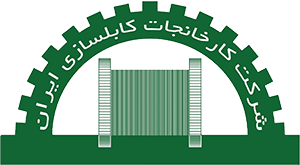Telecommunication Cables
Copper Telephone Cables:
- Jumper wire types with copper conductor 0.5 to 1.8 mm and insulated from one strand to 5 strings….
- Types of double air cables consisting of two copper conductors of 0.6 mm or 9 mm and a wire of 0.6 mm or 1.2 mmwith polyethylene insulation.
- Types of insulated and sheath-insulated (J-YY) P.V.C mounting cables with conductor diameter of 0.5 or 0.6 mmfrom one pair to 6 pairs.
- Types of Electrostatic Shield Mounting Cables with 0.4 or 0.5 or 0.5 or 0.6 mm Conductor Shield and PVCInsulation or Polyethylene and Aluminum Shield Insulation and P.VC Sheath from 2 Couples to 200 Couples MDFs can
be manufactured.
- Types of telecommunication cables for A2Y (ST) 2Y subscriber network with conductor 0.4 or 0.5 or 0.6 mm and polyethylene insulation and electrostatic shield and black polyethylene sheath from 2 pairs to 200 pairs.
- Types of A2Y (L) 2Y-T and A2Y (ST) 2Y-T air cables with copper conductors 0/4, 6/6. 0.8mm with polyethylene and aluminum shield insulation and 7 1 1.20 wire harness and black polyethylene sheath from 10 pairs to 100 pairs.
- Ircor Channel Cable (CUC) with 0.4mm conductor diameter aluminum shield insulation and two PE sheaths from 600 pairs to 2400 pairs.
- JFC Field Channel Cable (CFC) with 0.9,0.6,0.4 mm conductor diameter with aluminum shield insulation and black polyethylene sheath from 10 pairs to 1200 pairs.
- Types of BFC earth jelly cables with 0.9,0.6,0.4 mm conductor with polyethylene insulation, aluminum shield armorastiglated and two black polyethylene sheaths from 10 pairs to 1200 pairs.
- Railway cables with polyethylene insulated conductor copper or quad and P.V.C sheath
Copper cables are manufactured according to the standard of TCI Iran and IEC, ICEA / ANSI and REA International Standards (1,2 – 708) and the raw materials and general tests used are in accordance with the following standards:
- ASTM (American Society for Testing and Material)
- BS (British Standard Institute)
- IP (Institute Of Petroleum)
They can be used at temperatures between -40 ° C and + 70 ° C.





